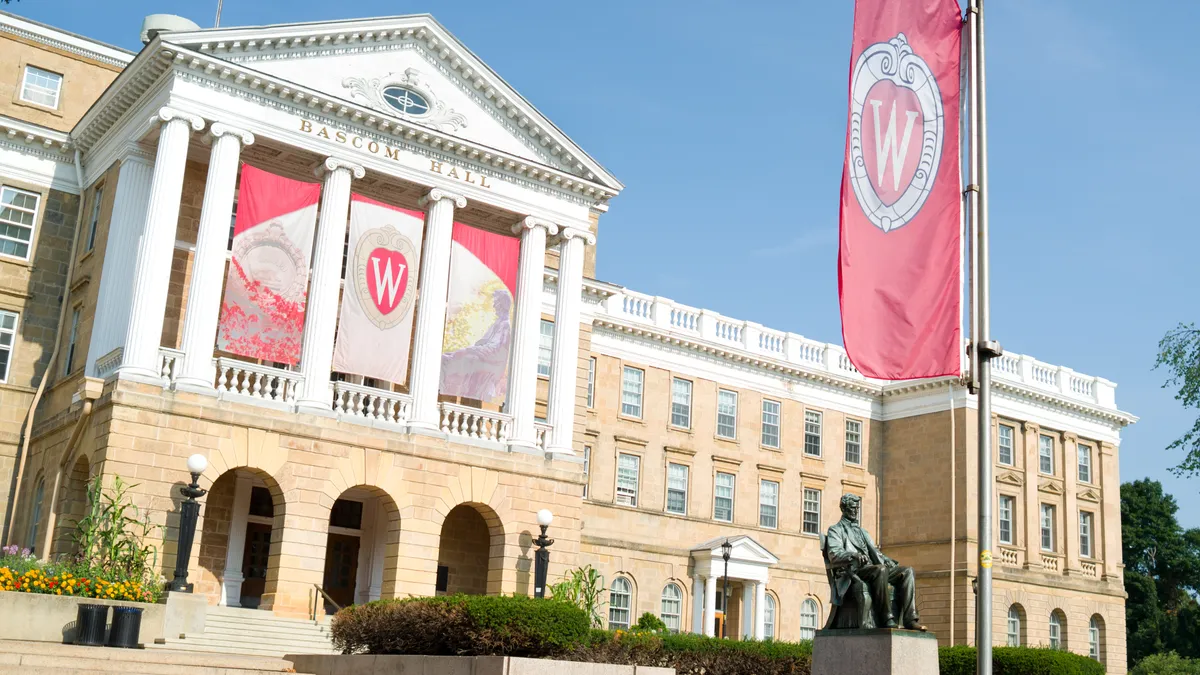Dive Brief:
- Out-of-state enrollment at the University of Wisconsin at Madison jumped by 29% from fall 2016 to fall 2019 after officials removed a cap on out-of-state students, according to a working paper from American and Canadian researchers.
- Tuition revenue rose 47% over that time frame. Researchers found the new revenue was used to fund an increase in financial aid for lower-income students, particularly those whose families earned less than $30,000 a year.
- Some researchers believe that increasing out-of-state enrollment will harm an institution’s academic quality, according to the paper. But the study, which has not been peer reviewed, showed lifting the out-of-state cap didn’t significantly affect measures of academic quality.
Dive Insight:
Institutions that are similar to UW-Madison might benefit from changing their own policies capping out-of-state enrollment, said Natalia Orlova, a co-author of the study who is now a research data specialist with the California Department of Forestry and Fire Protection
Colleges most likely to benefit include those with declining funding, the capacity to enroll more students, and a reputation that will draw out-of-state students.
“If you are trying to get a little bit more funding for the university, we would say that if you have any caps on out-of-state enrollment, you could try lifting those and seeing what happens for the next few years,” Orlova said.
UW-Madison previously capped out-of-state undergraduate enrollment at 27.5%. In 2015, the university lifted the cap and replaced it with a policy requiring the institution to enroll 3,600 first-year students from Wisconsin each fall. That fall, the university admitted 4,685 first-year students.
In 2019, officials changed the policy again. Now, UW-Madison must enroll 5,200 new in-state students each year, based on a three-year rolling average. This policy counts transfer students and Minnesota students covered by tuition reciprocity agreements with the Wisconsin university system.
In fall 2022, the university added more than 9,700 new students, both transfers and first-time undergraduates.
Previous research has suggested out-of-state students crowd out those from low-income backgrounds. It’s also suggested out-of-state enrollment can bring down an institution’s academic quality, harming in-state students.
But the working paper’s researchers found no statistically significant changes to the four-year graduation rate or student-to-faculty ratio, nor changes to retention, after the policy change.
The average size of an institutional grant at UW-Madison during the study period increased by nearly 30%. For students with a family income below $30,000, the average financial aid rose around 24%.
Other states, such as California and North Carolina, have caps on the share of out-of-state students who can be enrolled at public universities. But even at institutions without a formal cap, there is often an implicit agreement to limit this enrollment, Orlova said.
“The core of it is the notion that in-state universities were built to serve in-state students,” she said. “There’s still a sentiment that we should not be enrolling that many students from outside.”













